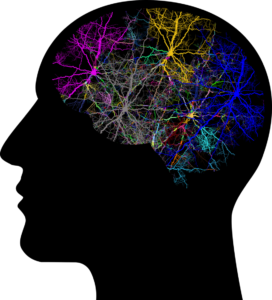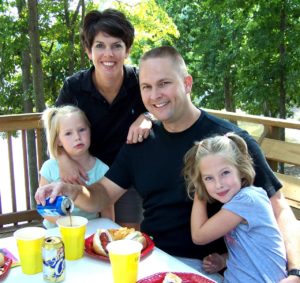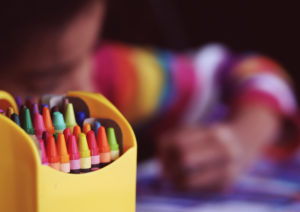OCD in Children: What Parents Need to Know
When someone seems overly concerned about being clean, others might call them “obsessive.” When a person insists on specific behaviors or requires a certain order of things, words or actions, people may say they’re “compulsive”.
 People may use the term “OCD” in an almost light-hearted manner to justify behaviors or rules which they themselves practice. But for anyone diagnosed with real Obsessive Compulsive Disorder (OCD), there is nothing light-hearted about their struggles. For them, the condition often brings distress and places limits on their every day lives to varying degrees.
People may use the term “OCD” in an almost light-hearted manner to justify behaviors or rules which they themselves practice. But for anyone diagnosed with real Obsessive Compulsive Disorder (OCD), there is nothing light-hearted about their struggles. For them, the condition often brings distress and places limits on their every day lives to varying degrees.
According to information released by the American Psychiatric Association (APA), the best estimates are that about 1.2% of the American population struggles with OCD. It occurs in adults, teens, and children and it is likely that at least a million U.S. children wrestle with OCD symptoms (OCFMC, 2006).
Other studies predict that one child or teenager out of every 200 will develop OCD (AACAP, 2013). The average age when OCD begins is 19-1/2 years old, and 1/4 of all people who were diagnosed with OCD had developed obvious symptoms by the age of 14 (American Psychiatric Association, 2013).
Parents are overwhelmed and confused when one of their children develops the symptoms or begins to live under the dark cloud of the fears that are a part of OCD.
It’s difficult to know what to do when a child has an emotional meltdown or battles with someone who has (probably without realizing it) interfered with a “necessary” order of items and actions.
It should be good news to know that effective treatment is available. Parents should begin by learning all that they can about OCD with the goal of becoming better able to understand what a child with OCD is facing and how and where to find the right help. Newport Beach Christian Counseling can guide parents through this process, offering the support needed to find the right resources and treatment for their child’s needs.
What is Obsessive Compulsive Disorder?
OCD is a mental health issue that is diagnosed by looking for genuine obsessions and/or compulsions.
Obsession: Obsessions may be defined as urges, thoughts, or images that intrude on a person’s mind and life in a way that becomes difficult or impossible to ignore (APA, 2013). For example, someone can become a germophobe. A child may become driven to seek perfection. Another lives with the constant fear of harming themselves or others.
Compulsion: Compulsions, on the other hand, are behaviors or mental acts that a person is driven to repeat again and again. Compulsions may grow out of obsessions (APA, 2013). People with OCD find themselves compelled to continually wash their hands, perform special rituals, engage in what is known as “checking” behaviors, count things, or even pray because they believe they must.
When a person suffers from OCD, they carry out certain acts (compulsions) to try to relieve anxiety or tension (American Psychiatric Association, 2013). Often the anxiety for which the person desperately wants relief is driven by an obsession. The compulsive behavior brings a measure of relief but it’s only temporary, so when the anxiety returns, the person must perform the action again to get relief. This develops into a cycle where relief from the anxiety reinforces the need to repeat the compulsive behavior in order to experience another brief period of relief.
 The obsessions and compulsions are often connected, such as germophobia and washing one’s hands. Or, a student is so afraid of failing that he or she keeps on checking and checking his or her test answers even to the point of missing recess or lunch.
The obsessions and compulsions are often connected, such as germophobia and washing one’s hands. Or, a student is so afraid of failing that he or she keeps on checking and checking his or her test answers even to the point of missing recess or lunch.
In other cases, the obsessions and compulsions may not seem to be related. Think, for example, of a child who counts a certain number of cracks in a sidewalk thinking it will keep his mother from being hurt. So, a diagnosis of OCD does not always mean that the obsessions and compulsions are related. A child may have one without the other.
How OCD develops and manifests itself can also vary. Also, the focus of obsessions and compulsions shift over time. For some people, obsessions and compulsion come out more obviously and intensely when they are under stress (APA, 2013). Those same people may experience fewer or less intense symptoms in situations where stress levels are low. And often, when one obsession or compulsion is eliminated, others may change.
True OCD symptoms are not simply small irritations. They consume a major portion of the time in a child’s day. Further, they may increase a child’s level of stress, bringing layers of problems.
For example, a germophobic child may wash their hands to the point that they become dry and cracked, and may even start to bleed. Then, he or she may also become terrified of being around sick people or having physical contact with someone who has even been close to a sick person.
This can disrupt relationships, or bring on peer harassment if the fears or behaviors become known. Brothers and sisters may feel rejected by the child who struggles with germophobia because he or she may avoid giving hugs or express fear which the siblings may take personally.
OCD not only affects the person who struggles with the obsessions and compulsions, but also impacts their family and friendships. Then the OCD sufferer feels shame over their compulsive behaviors. A child’s need to carry out these compulsions often builds more shame. The emotional distress that often comes with OCD can become so heavy that depression also develops.
OCD in Children: Catching it Early
Early warnings of OCD in children may go unnoticed. Children may find certain behaviors embarrassing and may try to hide them. But parents who observe some of the following in their child’s life may have reason to seek further assistance in checking out the possibility of OCD (OCFMC, 2006; AACAP, 2013):
1. Repetitive behaviors (washing their hands over and over, touching things in a specific order, anxiously rechecking school work, or repeatedly checking doors, etc.
2. Continuous fears that become extreme (such as unusual fears surrounding germs or dirt, or anxiety about the well being of the family).
3. Often repeated statements that go beyond reasonable concern and obsessively express worry outcomes that do not necessarily follow. “I must touch [this object] 10 times so that my sister will still like me” or “When I fail to pray a certain way, our team loses.”
4. Habits and behaviors beginning to get in the way of normal life or friendships.
5. Needing reassurance too much and too often (“will I be okay if…?”; “will it be okay…?”).
6. Constantly compulsion to carry out an action until everything feels “correct.”
7. Often driven to confess bad thoughts, like sexual imagery or thinking unkind thoughts about other people.
8. Avoiding more and more activities not connected to obsessions or compulsions
9. Always seeming to be behind (because obsessions and/or compulsions demand time).
10. Increased physical symptoms of anxiety, such as headaches and stomach aches.
What Causes Obsessive Compulsive Disorder?
As is typical of much of the world of mental illness, the exact causes of OCD are still largely a mystery. In fact, a number of different factors acting in combination, including environmental and biological factors, may be behind a child’s OCD.

The Diagnostic and Statistical Manual of Mental Disorders, 5th Edition (DSM-5), states that for those individuals who have a member of their immediate family that has OCD there is a 200% greater likelihood that they will develop OCD over those whose first-degree relatives are not OCD (APA, 2013).
What’s more, they also found that when the immediate family member has experienced childhood-onset OCD, the likelihood of developing OCD increases by 1000%. Other possible causes of OCD include significant life transitions (divorce, changing schools, etc), abuse, and loss (AACAP, 2013; APA, 2013).
Whatever the cause may be in a given instance, it has become clear that OCD has a significant effect on the brain. Brain scans have shown differences in brain activity between people who have OCD and those who do not (Scharwtz, 2016).
OCD may also have physical causes, so an evaluation by a medical professional is always a good idea. Physical causes may be addressed to help reduce contributing factors. For example, Pediatric Autoimmune Neuropsychiatric Disorders Associated with Streptococcal (PANDAS) can trigger a sudden and severe onset of OCD or tic disorder symptoms (National Institute of Mental Health, 2016). In these cases, the streptococcal infection would require medical treatment.
Helping Your Child
If your child exhibits symptoms of OCD, there are a number of ways to find help and give good support.
- Get immediate professional help and counsel. There is no reason for you to try to handle this alone!
- Don’t fall into the trap of merely using reassurance as your tool to try to calm your child. This is not an effective way to reduce the symptoms nor does it teach your child to fight and manage them.
- Don’t try to avoid everything that your child fears or is obsessed by since this only tends to reinforce their symptoms.
- Give your healthy coping skills, like memorizing relevant Bible verses, relaxation techniques, evaluating the rationality of their thoughts, soothing activities, and learning to live in the moment. Stress tends to trigger and magnify symptoms, so being able to use effective stress management tools makes a real difference.
- Demonstrate how to set proper boundaries. These can help your child handle stress.
- Teach your child how to take care of themselves, like eating healthy foods and getting enough sleep,
 Teach your child to recognize their obsessions and compulsions. Knowledge is a power.
Teach your child to recognize their obsessions and compulsions. Knowledge is a power.- Do not shame! There may be no logic behind OCD symptoms, but they are quite real and your child is not to blame.
- Provide a time and place for your child to express and process negative feelings, like embarrassment and shame, that go along with OCD symptoms.
- Find support for yourself and a place to process your own feelings about your child’s OCD symptoms. You may experience frustration and fear, along with any number of other difficult but typical emotions. Learn to take care of yourself so that you can take care of your child.
Treatment for OCD in Children
To confirm a diagnosis of OCD in children, parents should seek an evaluation by an experienced mental health professional. The DSM-5 states that OCD left untreated unlikely to go away and the symptoms will fluctuate as time goes on (APA, 2013).
Several different therapies exist for treating OCD in children. Cognitive behavioral therapy (CBT) is one of the most recommended. One kind of CBT applied quite often is known as Exposure and Response Prevention (ERP).
Much like it sounds, ERP is a type of therapy where a patient is taught not to act on any compulsion in order to ease their anxiety. Counselors will then teach a child various tools to deal with the difficult emotions.
Though the idea of asking a child not to use his or her compulsive behaviors in the face of anxiety may sound frightening, therapy can be paced so that anxiety does not become unmanageable.
Other methods of CBT, include “imagined exposure” and learning to overcome negative and illogical thinking patterns. For some children, play therapy may be a part of treatment.
Along with counseling medical, evaluation is crucial. A medical professional can help determine whether medication might help.
It may also be necessary to ask your child’s school for any help or support they may be equipped to offer. You should talk to your counselor about this.
Remember, you need not try to parent your OCD child alone! Reach out to a counselor at Newport Beach Christian Counseling today to ask questions and discuss the many options available for support and treatment.
There is hope and healing!
“Jenga,” courtesy of Michel Parzuchowski, unsplash.com, CC0 License; “Brain”, Courtesy of GDJ, Pixabay.com; CC0 License; “Tablet Time”, Courtesy of Annie Spratt, Unsplash.com, CC0 License; “Knowledge is Power”, Courtesy of Geralt, Pixabay.com, CC0 License;

 By reading this article you’re taking the first step in what can be a journey of healing and hope. We’ll discuss different types of family counselors, how to select one who’s right for you, and how to budget for counseling. Take the time to consider each point in the selection process, and you’ll be equipped to make an informed decision.
By reading this article you’re taking the first step in what can be a journey of healing and hope. We’ll discuss different types of family counselors, how to select one who’s right for you, and how to budget for counseling. Take the time to consider each point in the selection process, and you’ll be equipped to make an informed decision. Behavior intervention applies to children who are struggling with problem behaviors, or to adults who are behaving inappropriately either in public or at home. In the family therapy setting, parents and the child will work with the counselor to identify unacceptable behaviors, set boundaries, and create rewards systems, along with other helpful skills.
Behavior intervention applies to children who are struggling with problem behaviors, or to adults who are behaving inappropriately either in public or at home. In the family therapy setting, parents and the child will work with the counselor to identify unacceptable behaviors, set boundaries, and create rewards systems, along with other helpful skills. Children going through puberty or experiencing life stress or mental health issues may struggle to have a good relationship with their parents. They may exhibit disrespect and dislike. Parents also deal with life stressors, mental health issues, and other factors that can make positive parenting difficult.
Children going through puberty or experiencing life stress or mental health issues may struggle to have a good relationship with their parents. They may exhibit disrespect and dislike. Parents also deal with life stressors, mental health issues, and other factors that can make positive parenting difficult. First, consider the value you place on therapy and the perspective that it can preventative medicine for your family relationships. Yes, therapy is expensive, but as counselors, we truly believe it’s worth it.
First, consider the value you place on therapy and the perspective that it can preventative medicine for your family relationships. Yes, therapy is expensive, but as counselors, we truly believe it’s worth it. In addition, children may be able to exert more control over their behavior in some kinds of circumstances rather than in others, particularly when emotions are running high. While parents find this understandably exasperating, it is normal.
In addition, children may be able to exert more control over their behavior in some kinds of circumstances rather than in others, particularly when emotions are running high. While parents find this understandably exasperating, it is normal. There may be various explanations for why a child steals. It may be that the act of stealing is exhilarating to a child, or perhaps because it enables them to somehow feel in control. It is important to question a child’s motivation to get to the bottom of the behavior.
There may be various explanations for why a child steals. It may be that the act of stealing is exhilarating to a child, or perhaps because it enables them to somehow feel in control. It is important to question a child’s motivation to get to the bottom of the behavior. The child may have an active imagination and find it hard to stay present, getting lost in their imaginings. If ADHD is the cause of the problem of ignoring others, it is possible for children to be taught ways of managing their difficulties with concentration.
The child may have an active imagination and find it hard to stay present, getting lost in their imaginings. If ADHD is the cause of the problem of ignoring others, it is possible for children to be taught ways of managing their difficulties with concentration. It is important to uncover the underlying reasons why a child feels the need to use substances – for example, is it as a means of coping? Or is it because of peer pressure from friends?
It is important to uncover the underlying reasons why a child feels the need to use substances – for example, is it as a means of coping? Or is it because of peer pressure from friends? Your son or daughter might be struggling with serious teen issues such as depression, anxiety, or bullying, and you want to know how you can support them through this time.
Your son or daughter might be struggling with serious teen issues such as depression, anxiety, or bullying, and you want to know how you can support them through this time. Also, teenagers, themselves, are constantly changing, as secondary sex characteristics appear and growth spurts take place. They may seem obsessed with their appearances, but they’re exploring uncharted territory. This is the root of adolescence; it’s self-discovery of one’s internal, external, and social realities.
Also, teenagers, themselves, are constantly changing, as secondary sex characteristics appear and growth spurts take place. They may seem obsessed with their appearances, but they’re exploring uncharted territory. This is the root of adolescence; it’s self-discovery of one’s internal, external, and social realities. These issues exist for girls too, and often there’s an even smaller margin for error. High school is an unforgiving social crucible where kids manifest their own insecurities as they bully others and tear each other down. And this bullying can follow everyone around on social media. Before the days of the Internet, you could get away from your bully by going home. Now your bully is always with you.
These issues exist for girls too, and often there’s an even smaller margin for error. High school is an unforgiving social crucible where kids manifest their own insecurities as they bully others and tear each other down. And this bullying can follow everyone around on social media. Before the days of the Internet, you could get away from your bully by going home. Now your bully is always with you. The more consistent you are, the stronger your relationship will be, and the more your child will rely on you. This means that when they have a problem, they’ll be more likely to bring it to you rather than to someone less dependable.
The more consistent you are, the stronger your relationship will be, and the more your child will rely on you. This means that when they have a problem, they’ll be more likely to bring it to you rather than to someone less dependable. Parents who think they’ve made a reasonable request might not know how to react when their children respond in anger.
Parents who think they’ve made a reasonable request might not know how to react when their children respond in anger.  It’s important to remind yourself that your child is the only one who possesses the ability to change his or her behavior.
It’s important to remind yourself that your child is the only one who possesses the ability to change his or her behavior. We introduced this topic in our discussion on reflective listening. Acknowledging a child’s feelings means you verbally reflect what you think their current thoughts and emotions are. Pay attention to facial expressions, body language, and both verbal and nonverbal cues.
We introduced this topic in our discussion on reflective listening. Acknowledging a child’s feelings means you verbally reflect what you think their current thoughts and emotions are. Pay attention to facial expressions, body language, and both verbal and nonverbal cues. “You may choose to hit your pillow or you may choose to hit a beanbag.”
“You may choose to hit your pillow or you may choose to hit a beanbag.” Unfortunately, they aren’t immune to anxiety. They enter this big, scary world and face many mountains of their own. Think about moving towns, changing schools or even having to participate in a spelling bee when there’s a learning or attention issue. Anxiety can be crippling at any age.
Unfortunately, they aren’t immune to anxiety. They enter this big, scary world and face many mountains of their own. Think about moving towns, changing schools or even having to participate in a spelling bee when there’s a learning or attention issue. Anxiety can be crippling at any age. It’s easy to get overwhelmed and feel helpless when your child is facing anxiety, but when you remain steadfast and calm you can be fully present to guide your child through their everyday anxiety.
It’s easy to get overwhelmed and feel helpless when your child is facing anxiety, but when you remain steadfast and calm you can be fully present to guide your child through their everyday anxiety. Help your child understand how the body changes when experiencing fear and anxiety, so he can begin to recognize the signs. Teach your child to talk back to their worries and fears. Imagine worry as a big bully or monster that can be conquered by telling why it isn’t welcome in your world.
Help your child understand how the body changes when experiencing fear and anxiety, so he can begin to recognize the signs. Teach your child to talk back to their worries and fears. Imagine worry as a big bully or monster that can be conquered by telling why it isn’t welcome in your world. Instead, you can think of it this way, “The bus driver is a professional and cares about the kids. My classmates show up every day to school without getting left somewhere else. My good friend Robby would sit with me if I asked him. My classmates even talk about how much fun it is to ride a bus.” The thoughts slowly shift to ones of excitement and confidence.
Instead, you can think of it this way, “The bus driver is a professional and cares about the kids. My classmates show up every day to school without getting left somewhere else. My good friend Robby would sit with me if I asked him. My classmates even talk about how much fun it is to ride a bus.” The thoughts slowly shift to ones of excitement and confidence. The National Institute of Mental Health (NIH) defines ADHD as “a brain disorder marked by an ongoing pattern of inattention and/or hyperactivity-impulsivity that interferes with functioning or development.”
The National Institute of Mental Health (NIH) defines ADHD as “a brain disorder marked by an ongoing pattern of inattention and/or hyperactivity-impulsivity that interferes with functioning or development.” CHADD and the NIMH (National Institute of Mental Health) state that even after a plethora of studies, the sources of ADHD are still relatively elusive. NIMH suggests that “like many other illnesses, a number of factors can contribute to its development,” such as:
CHADD and the NIMH (National Institute of Mental Health) state that even after a plethora of studies, the sources of ADHD are still relatively elusive. NIMH suggests that “like many other illnesses, a number of factors can contribute to its development,” such as:
 In addition, Philippians 2:3-4 demonstrates the need for one to have a servant’s heart, Romans 12:2, Ephesians 4:23, and Philippians 4:8 teach self-control over one’s own thought life, 1 Corinthians 14:40 implies that living lives of disciplined structure is desirable, 2 Timothy 3:10-11 shows that demonstrating acceptable behavior is important, and 2 Timothy 3:16 states that the teaching of the Bible is profitable.
In addition, Philippians 2:3-4 demonstrates the need for one to have a servant’s heart, Romans 12:2, Ephesians 4:23, and Philippians 4:8 teach self-control over one’s own thought life, 1 Corinthians 14:40 implies that living lives of disciplined structure is desirable, 2 Timothy 3:10-11 shows that demonstrating acceptable behavior is important, and 2 Timothy 3:16 states that the teaching of the Bible is profitable. It can be tough on the whole family when one of the children struggles with anxiety symptoms, and even more so when their best friend or their teacher just doesn’t get what is happening or understand how to support them.
It can be tough on the whole family when one of the children struggles with anxiety symptoms, and even more so when their best friend or their teacher just doesn’t get what is happening or understand how to support them. 

 Selective mutism may also produce other problems at school, especially if the teacher cannot interact with, and assess the educational levels of the child, or where the child cannot communicate their needs to the teacher.
Selective mutism may also produce other problems at school, especially if the teacher cannot interact with, and assess the educational levels of the child, or where the child cannot communicate their needs to the teacher. However, it’s just as challenging (or even more so) to be the parent of a child at this stage of life. Suddenly, your relationship with your adoring child shifts, and you find yourself struggling to relate to a seeming stranger who treats you as an enemy. In the wake of these changes, the entire family struggles to adjust to a new normal.
However, it’s just as challenging (or even more so) to be the parent of a child at this stage of life. Suddenly, your relationship with your adoring child shifts, and you find yourself struggling to relate to a seeming stranger who treats you as an enemy. In the wake of these changes, the entire family struggles to adjust to a new normal.  According to Pickhardt, “Because parenting is a position of partial influence, parents need to limit their sense of responsibility. They can never know enough. They cannot fully protect any more than they can fully prepare.”
According to Pickhardt, “Because parenting is a position of partial influence, parents need to limit their sense of responsibility. They can never know enough. They cannot fully protect any more than they can fully prepare.” Make sure you’re not disciplining your child for behavior that is simply a developmental shift. Have grace on your teenager as he or she deals with mood swings, conflict, changes in communication, and even a propensity towards defiance.
Make sure you’re not disciplining your child for behavior that is simply a developmental shift. Have grace on your teenager as he or she deals with mood swings, conflict, changes in communication, and even a propensity towards defiance. The elevated levels of conflict in your home during this time are a natural way to “broker increasing differences between you and your teen, a necessary part of how you get along.” In other words, the conflict is necessary in order for you and your teen to reach a new level of equilibrium in your relationship, one that acknowledges disagreements and different values.
The elevated levels of conflict in your home during this time are a natural way to “broker increasing differences between you and your teen, a necessary part of how you get along.” In other words, the conflict is necessary in order for you and your teen to reach a new level of equilibrium in your relationship, one that acknowledges disagreements and different values. Parents never want to hear these heartbreaking words uttered from their child’s mouth, “I’ve been sexually abused.” Children are often under the care of other adults at school, church, a friend’s sleepover, and even under their own roof. In these seemingly harmless settings, horrendous acts are carried out.
Parents never want to hear these heartbreaking words uttered from their child’s mouth, “I’ve been sexually abused.” Children are often under the care of other adults at school, church, a friend’s sleepover, and even under their own roof. In these seemingly harmless settings, horrendous acts are carried out.  Triggers could be a certain smell like the cologne the abuser wears, people who sound like the abuser, or certain sights that bring flashbacks. Another form of PTSD in children is having disturbing dreams or problems getting a good night’s sleep. Nightmares become prevalent and memories of the trauma can disrupt their concentration at school.
Triggers could be a certain smell like the cologne the abuser wears, people who sound like the abuser, or certain sights that bring flashbacks. Another form of PTSD in children is having disturbing dreams or problems getting a good night’s sleep. Nightmares become prevalent and memories of the trauma can disrupt their concentration at school. The abuser often reinforces this message telling the child that somehow the child made the abuser touch them. It’s a tug-of-war in the mind for children in this situation. They know something feels wrong, but the mixed messages, instilled fear, and false responsibility can create turmoil in their minds.
The abuser often reinforces this message telling the child that somehow the child made the abuser touch them. It’s a tug-of-war in the mind for children in this situation. They know something feels wrong, but the mixed messages, instilled fear, and false responsibility can create turmoil in their minds. Children who have been hypersexualized from assault may make sexual comments to other students or have an advanced knowledge about sex. Of course, in today’s world children are often exposed to movies that are not age-appropriate and they pick up the terminology. But if a five-year-old girl can describe certain adult acts in detail, this should set off alarms.
Children who have been hypersexualized from assault may make sexual comments to other students or have an advanced knowledge about sex. Of course, in today’s world children are often exposed to movies that are not age-appropriate and they pick up the terminology. But if a five-year-old girl can describe certain adult acts in detail, this should set off alarms.